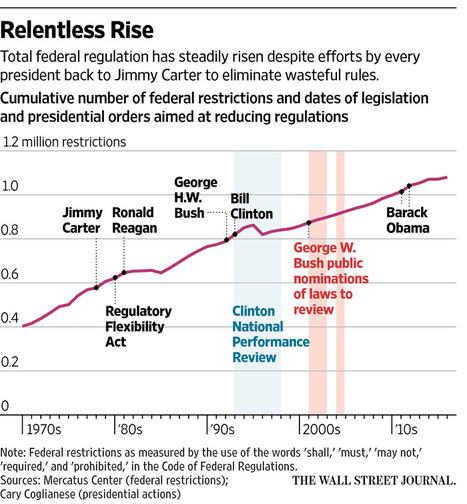(p. D1) Mr. Ahmed, 46, is in the business of chicken and rice. He immigrated from Bangladesh 23 years ago, and is now one of two partners in a halal food cart that sets up on Greenwich Street close to the World Trade Center, all year long, rain or shine. He is also one of more than 10,000 people, most of them immigrants, who make a living selling food on the city’s sidewalks: pork tamales, hot dogs, rolled rice noodles, jerk chicken.
These vendors are a fixture of New York’s streets and New Yorkers’ routines, vital to the culture of the city. But day to day, they struggle to do business against a host of challenges: byzantine city codes and regulations on street vending, exorbitant fines for small violations (like setting up an inch too close to the curb) and the occasional rage of brick-and-mortar businesses or residents.
. . .
(p. D6) Mr. Ahmed ties on his apron and pushes a few boxes underneath the cart so he can squeeze inside and get to work. Any boxes peeking out beyond the cart’s footprint could result in a fine (penalties can run up to $1,000), as could parking his cart closer than six inches to the curb, or 20 feet to the building entrance. Mr. Ahmed knows all the rules by heart.
. . .
He applied for a food vendor’s license, took a required health and safety class, bought a used cart and took it for an inspection by city officials. (The health department inspects carts at least once a year, and more frequently if a violation is reported.)
Mr. Ahmed still needed a food-vending permit, though, and because of a cap on permits imposed in the 1980s, only 4,000 or so circulate. He acquired his from a permit owner who has charged him and his partner $25,000 for two-year leases (for a permit that cost the owner just $200), which they are still paying off.
A day ago, Mr. Ahmed received a text message: 100 vendors were protesting the cap. Organized by the Street Vendor Project, a nonprofit group that is part of the Urban Justice Center and offers legal representation to city vendors, they hoped to pressure the City Council to pass legislation introduced last fall that would double the number of food-vending permits, gradually, over the next seven years. Mr. Ahmed, who believes the costs for those starting out should be more manageable, wanted to join them, but like many vendors, he couldn’t get away from work.
“The system is totally crazy,” Mr. Ahmed says. “Whoever has a license, give them a permit. It’s good for all of us.”
For the full story, see:
TEJAL RAO. “A Day in the Lunch Box.” The New York Times (Weds., APRIL 19, 2017): D1 & D6.
(Note: ellipses added.)
(Note: the online version of the story has the date APRIL 18, 2017, and has the title “A Day in the Life of a Food Vendor.”)


